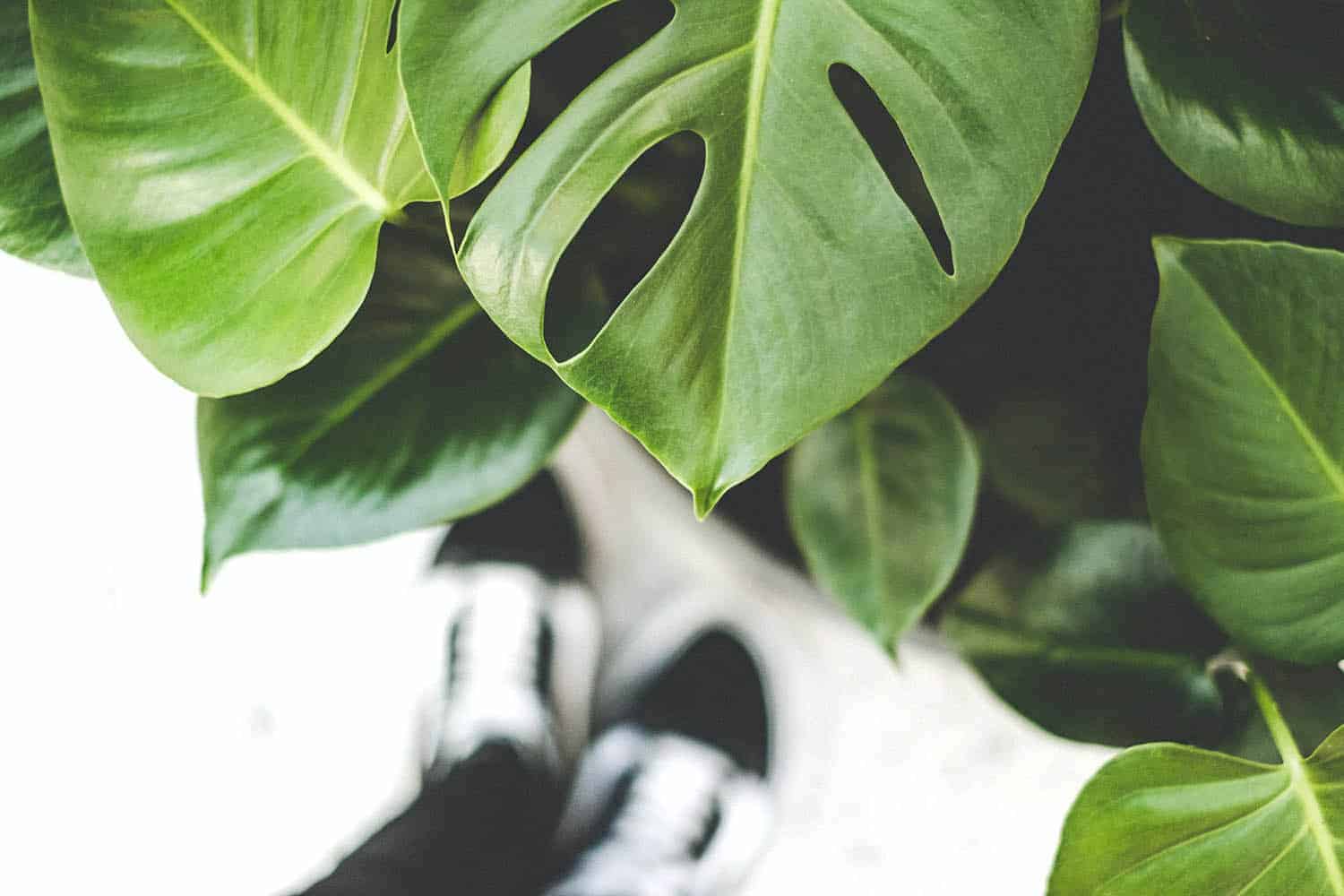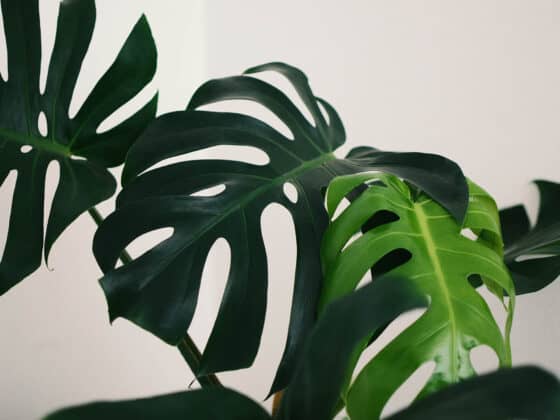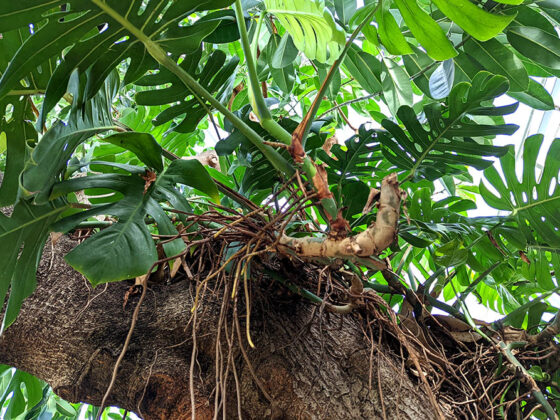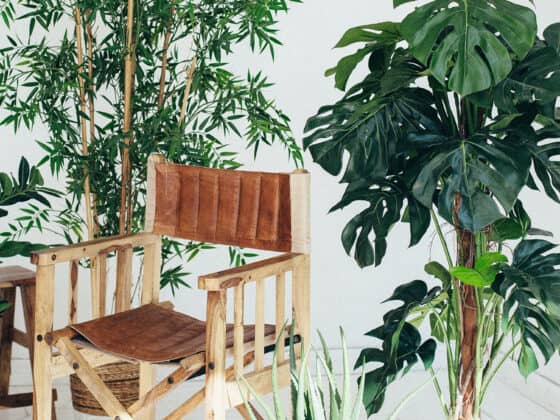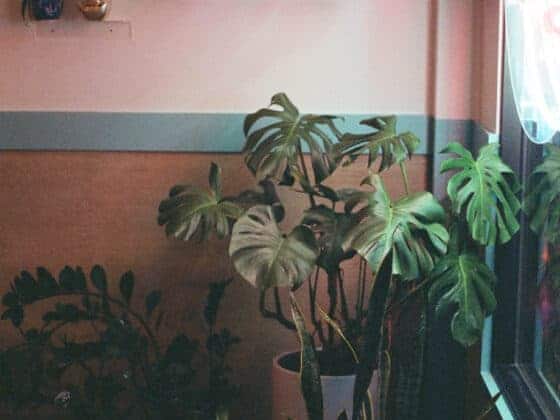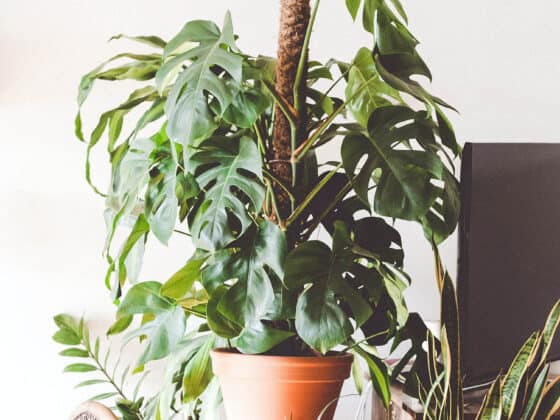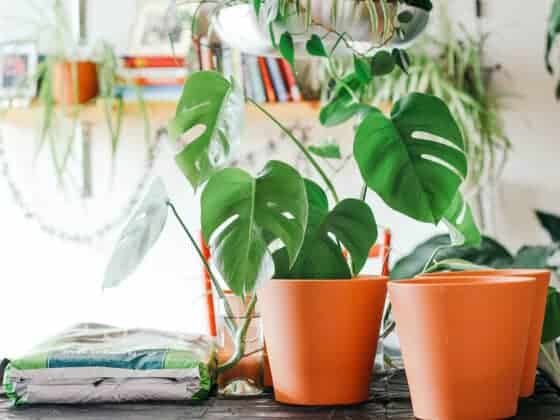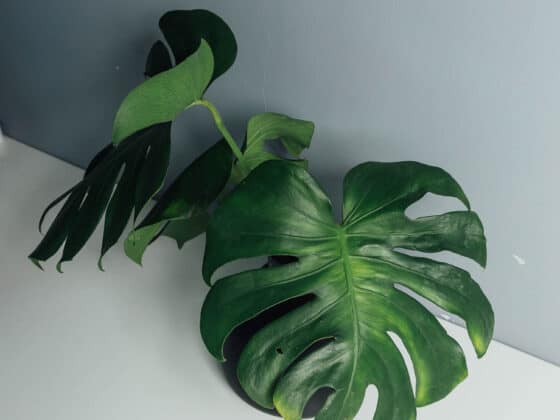I love how simple a Monstera deliciosa is to propagate. They grow quickly from cuttings, and in just a short time, you can fill your room with Monsteras or have multiple baby plants to pass along to friends. Online tutorials recommend including a node on the stem cutting you want to propagate, but is it necessary?
Can you propagate a Monstera without A node? Unfortunately not. You will never be able to grow a Monstera deliciosa from a cutting without a node. Nodes contain the structures needed to create new growth. A Monstera leaf can stay fresh in water for a long time and may even grow roots, but new stem and leaf growth can only come from a node.
It’s tempting to try to propagate a Monstera from a leaf, especially if you’ve broken it off by accident and want to try to salvage the piece. But unfortunately, it will never grow a new plant. Unless you have the node included, you’ll never have anything more than a leaf. Below, I’ll explain exactly what a node is and why it is necessary to clone your Monstera.
What is a Monstera Node?
Plant stems are all made up of nodes and internodes. The node is the location on the stem where new growth emerges (think buds, leaves, aerial roots, and other stems). Internodes are those areas of the stem in between nodes where nothing pushes out. Nodes are crucial for propagation.
So what does a Monstera node look like? Each new petiole of your Monstera (the stalk that joins the leaf to the stem) is attached to a node. Any place where a leaf, branch, or new stem emerges always is. You may also be able to see a white or brown knob protruding from the area; this is a node. If aerial roots are present, they will be emerging from a node as well.
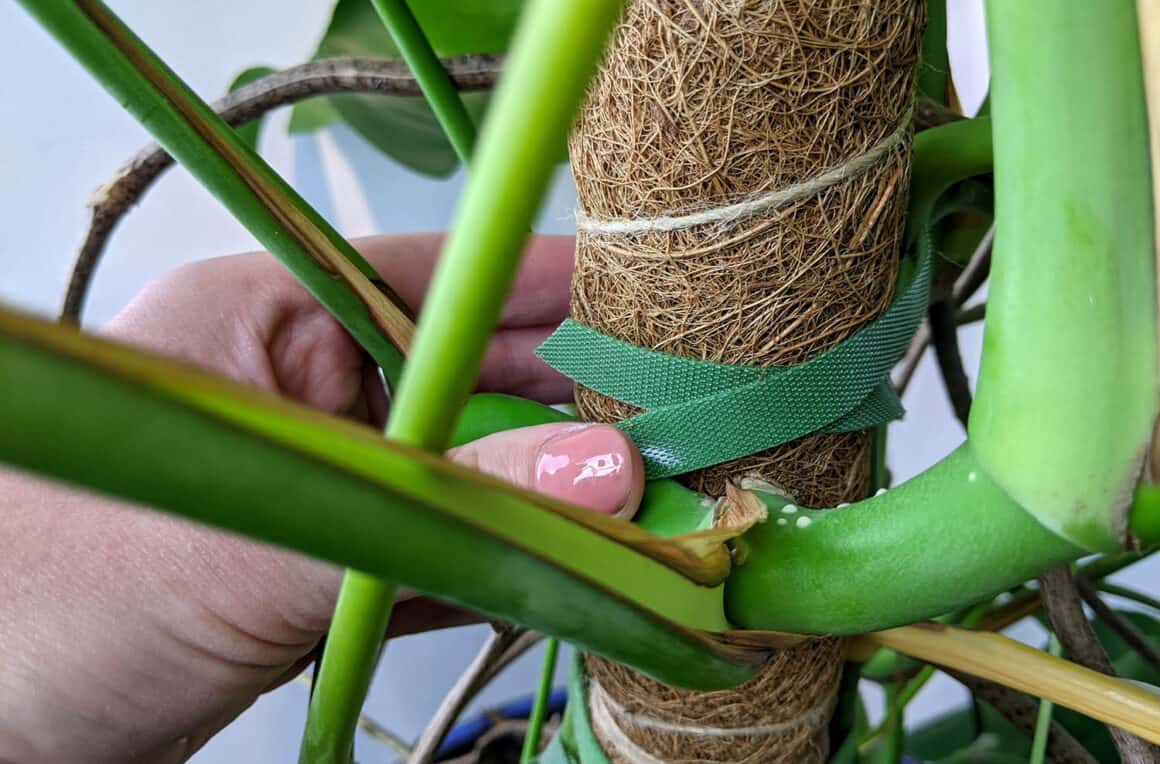
Any portion of your Monstera that forms a “V” (where two leaves split apart or a new leaf grows from the main stem) will be an area with a node present. When cutting, you’ll want to cut two to three inches beneath that “V” to ensure you’ve included a node.
Since mature Monsteras have many nodes, there are multiple opportunities for the plant to put out new growth. Each individual node has the potential to develop new leaves and roots.
Can You Propagate a Leaf Without A Node?
A Monstera leaf without a node won’t ever grow into a full-sized plant. However, a leaf with a petiole can stay fresh for months in water. That means you could use it decoratively on its own or as part of a bouquet with other cut flowers.
Some other plants can generate new plants from a leaf or even a small part of a leaf, but unfortunately, that’s not the case for Monstera deliciosa. To grow another plant with stem and multiple leaves, you must include a node in your cutting, which houses the tissue necessary for new growth.
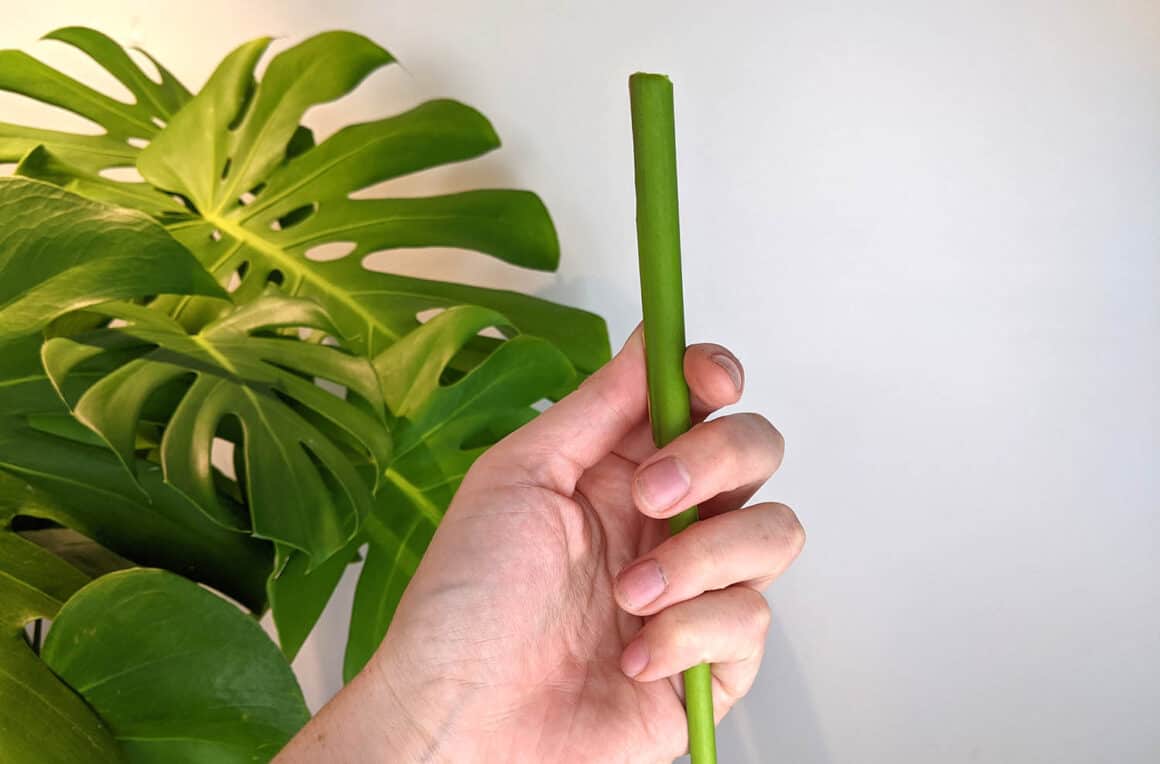
How To Take a Proper Node Cutting
Now that you know how to identify a Monstera node, you can use that knowledge to take cuttings that are most likely to grow into new plants. Once you’ve taken a proper clipping, you’ll be able to root it and eventually produce a large, mature Monstera.
While it is technically possible to propagate a Monstera just from a piece of stem with a node (these pieces are usually called “wet sticks”), that method is time-consuming and not as reliable. Growing a Monstera is easiest if there’s at least one leaf present and, preferably, an aerial root. For information on growing full plants from these node cuttings, read this article.
First, identify the area you want to cut for propagation. Look for that “V” shape I mention earlier where a leaf is splitting off from another or from the main stem. You’ll want to cut two to three inches below that “V” to be certain you’ve included a node.
If your plant is already large, there will be many possible areas to take a cutting. As you decide where to cut, keep in mind how you want the mother plant to grow and the shape you desire. There needs to be at least one node on your cutting, but it’s best if there are a few nodes on a single stem and one to three leaves.
You will be cutting just below a node, using a sharp knife or pruning shears. Make sure to sterilize the cutting tool before using it to avoid introducing infection or disease into the plant. I like to use a diluted bleach mixture of one part bleach to nine parts water or isopropyl alcohol to clean my shears.
Make a quick, clean cut for best results. No sawing motion is needed as that will produce jagged edges. After you’ve cut through the stem just below the node or aerial root, your cutting should have everything needed to develop into a full plant (leaves, stems, and node).
You might also choose to remove smaller leaves at this time, so the plant’s energy is focused just on the largest leaves. Some people also like to trim off aerial roots before they root the cuttings, but either option will be fine. If you like the look of the aerial root, leave it. If you don’t, remove it.
Rooting Monstera Cuttings
There are two options for rooting your new cuttings: using soil or using water. I’ve found that they work equally well, although water propagation has the advantage of allowing you to monitor the roots as they grow.
First, let your new stem cuttings dry out for a few minutes before putting them in soil or water to root. This allows the cut to scab over just a bit and will work to prevent rot.
For rooting in water, prepare a container that is tall enough to keep the stems upright. A tall, straight vase or jar works well for this. Arrange the Monstera stem(s) in your container before adding water. If there are aerial roots, you can coil them in the bottom of the container. You don’t want any leaves to be below the waterline.
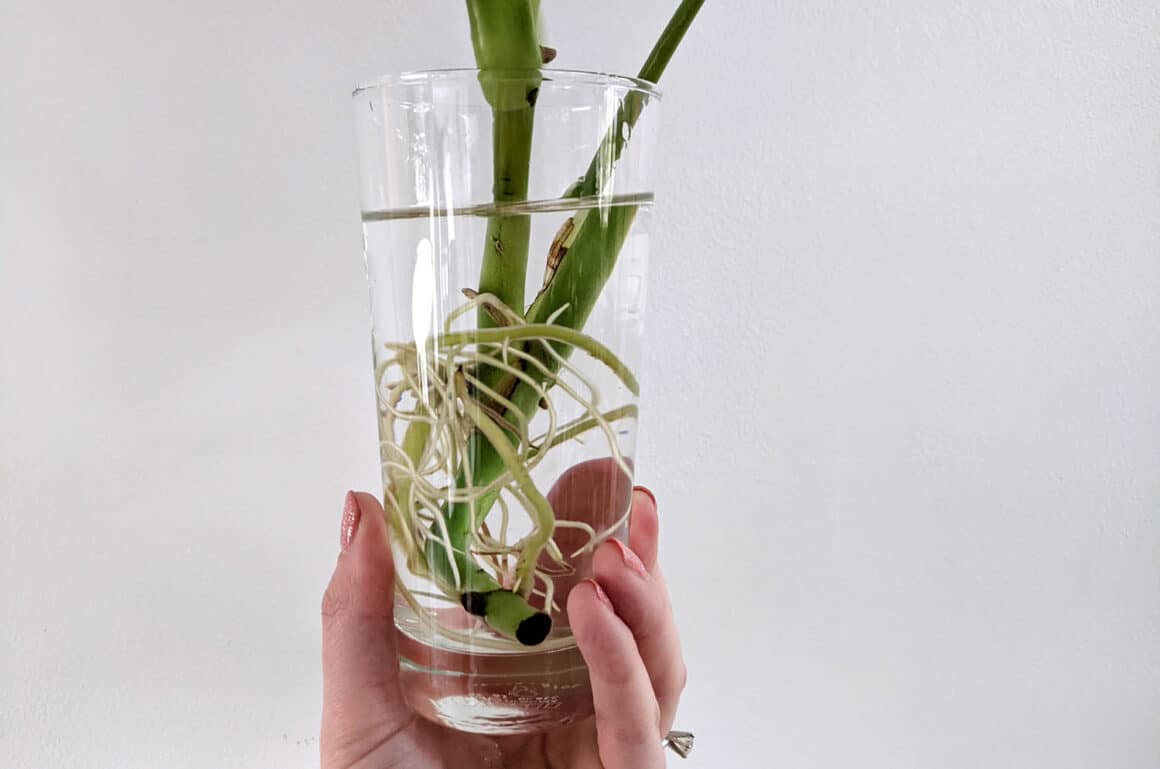
I usually use filtered tap water for propagation, but really anything will do. After your cuttings are in place, slowly pour in your water so that the nodes are submerged.
After a month or so, your new Monstera should have roots that are two to three inches long. At that point, the baby plant is ready to be transplanted into soil. Choose a well-draining potting soil and plant into a small container with at least one drainage hole in the bottom.
If you are rooting your cuttings directly in soil, choose a well-draining potting mix and a small pot. When starting out, small pots are best because you can always size up the pot later, but if your pot is too big, the soil will retain too much moisture. Too much moisture is bad for Monsteras.
If you want to, use a bit of rooting hormone on the end of your cutting before planting. Rooting hormone is not necessary for Monstera cuttings, but it can help to speed up the development of new roots.
Plant the cutting so that all the nodes (and aerial roots, if you have them) are under the soil. Make sure your cutting is planted deep enough that the plant will stay balanced upright. If you’re nervous that it will fall over, stake your Monstera to keep it vertical until the root system is established. Water thoroughly and add more soil if needed.
Regardless of whether you root your cutting in water or soil, you should start to have new roots developing within just a few weeks.
Basic Care For Monstera Cuttings
Mature Monsteras love bright, indirect light, and the cuttings have the same requirements. For water propagation, change the water at least once a week (every few days is preferable), or anytime it starts to look cloudy. If you see algae developing in your container, your location may be too sunny.
When you change the water, gently rinse off the roots and check for any part of stem or roots that are unhealthy. Remove anything that is brown or soft. It should be clear which parts of the plant are thriving – you’ll see white, healthy roots and firm green stems.
It is more difficult to monitor what is happening with cuttings that are rooted in soil. Your first indication that the cutting has successfully rooted will probably be new growth from the cutting. Your Monstera will let you know if something is wrong by yellowed, curling, or dropping leaves. If the cutting you have planted in soil doesn’t show any of these signs, it’s best to assume that things are fine beneath the surface.
What To Expect From Your New Cutting
Monsteras cuttings that have been rooted will start to put out new growth in a month or two. When exposed to the proper environment, Monsteras grow quickly, and it won’t be long before you’ve got a beautiful new plant.
You should note that young plants will not have any fenestration (the slits and holes that we’ve come to love from Monsteras) for a year or two. As the plant matures, it will grow larger and broader leaves, and eventually, they will start to split and look more like the iconic Monstera we all know and love.






